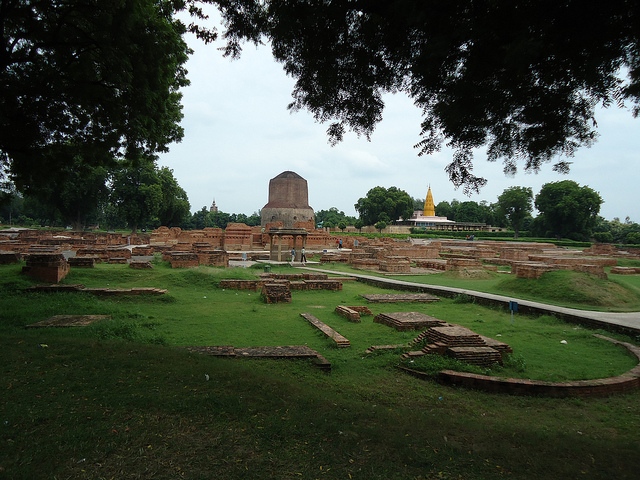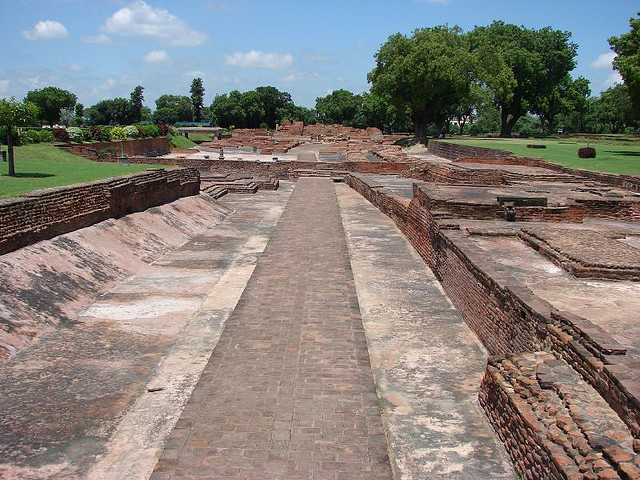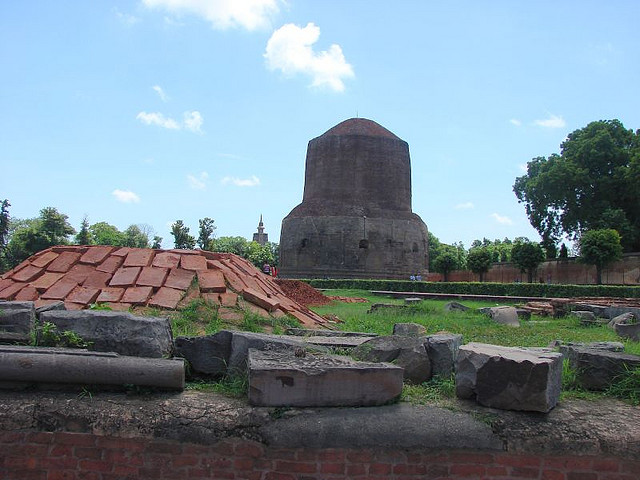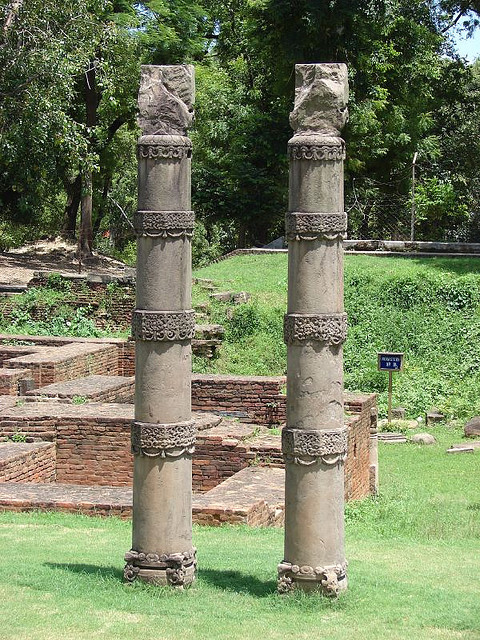Sarnath has an important place in Buddhist way of life, as it is the place where Lord Buddha gave his first sermon after he got enlighten in Bodh Gaya. The place along with Lumbini, Gaya and Kushinagar forms the Buddhist Quadrilateral in the Indian Sub-Continent. Lumbini is the place where Lord Buddha got birth and Gaya marks the place where he got enlightened. While Sarnath and Kushinagar are the places where Lord Buddha gave his first sermon and attained Nirvana respectively.
Image Credit:
http://www.flickr.com/photos/felixdance/4985917599/in/photostream
http://www.flickr.com/photos/gashwin/1071098507/in/set-7215760134248080…
http://www.flickr.com/photos/gashwin/1071086161/in/set-72157601342480802
http://www.flickr.com/photos/gashwin/1071961920/in/set-72157601342480802
http://www.flickr.com/photos/gashwin/1071963450/in/set-7215760134248080…





The History of Sarnath India began with the arrival of Gautam Buddha at this place in 528 B.C. after he attained enlightenment at Bodh Gaya. Here he preached his first discourse to his five former companions. This event is described in Buddhist texts as dharmachakra – pravartana, meaning the turning of the Wheel of Law. The Buddha taught them al that he had learned and thus they also became enlightened. This marked the foundation of the first Buddhist Sangha or the community of monks.
According to the History of Sarnath Uttar Pradesh, the Chinese traveler Hiouen Thsang had mentioned that the Deer Park at Sarnath was the forest gifted by the king of Benares of the Jataka, as a place where the deer might roan around unmolested. Thus Sarnath came to be named as ‘Migadaya’, so called because the deer could wander unharmed.
History of Sarnath India also mentions that the first preaching delivered by the Buddha at Sarnath is known in Pali as the Dhammacakkhapavathana Sutta. Other Suttas delivered here include Anattalakhana Sutta and the Saccavibhanga Sutta. The Buddha’s main teachings after his enlightenment centered around the Four Noble Truths and the Eightfold Path.
After preaching his first discourse at Sarnath, the Buddha spent the next rainy season at the Mulagandhakuti vihara in Sarnath. By then, the Buddhist Sangha had grown to 60 in number. The Buddha then sent the members of the Sangha to preach his teachings all around.
The flourish of Buddhism in Sarnath can be attributed to a large extent to the support of kings and wealthy merchants inhabiting the region. By the 3rd century B.C., Sarnath had flourished as a major center for arts, and the town reached its zenith during the Gupta reign (4th -6th century A.D.). According to the History of Sarnath Uttar Pradesh, when the Chinese traveler Hsuan Tsang visited Sarnath in the 7th century, there were 30 monasteries and 3000 monks living in Sarnath.
Sarnath came to be a major center of the Sammatiya school of Buddhism, one of the Nikaya or Hinayana schools. The occurrence of images of Heruka and Tara at Sarntah monasteries indicate that Vajrayana Buddhism also flourished here.
The end of the 12th centyru saw Sarnath being ransacked by Turkish Muslims. The site was extensively plundered for building materials and has been lying in ruins since then. Thereafter, Sarnath remained completely deserted until 1836, when the British began excavations and restoration of this historic city.
Air: Varanasi Airport at Babatpur is the nearest airport from Sarnath. It is about 30 km away from Sarnath. Taxi fare from Varanasi to Sarnath is about Rs 500. The airport is well linked by air to other cities in India including New Delhi, Chennai, Mumbai and Agra.
Rail: Sarnath is having a small railway station that is connected to Gorakhpur and Varanasi, mostly by passenger trains. Varanasi Cantonment railway station, at a distance of about 10 km from Sarnath, is the major railhead nearby. This station is connected to all cities in India by rail.
Road: Sarnath is well connected to all neighboring cities by Government owned buses. Private A/C and non A/C deluxe buses are also available from Sarnath to many cities in the State including Lucknow, Kanpur, Mathura, Agra and Allahabad. Deluxe bus fare is about Rs 3 to Rs 4 per head
Sarnath is famous throughout India for its Buddhism Paraphernalia. The place has a deep relation with Buddhism as a religion, philosophy and a way of life. Therefore it is only natural that Sarnath offers some of the exclusive and splendid paraphernalia to the tourists.
The primary shopping items include metal and Asta-Dhatu busts of Lord Buddha and other deities. These busts and statues are available in range of metal, color, size and built. Do buy a few as souvenir for your near and dear ones. Beware of counterfeit items that are sold by thugs. Avoid buying stolen artifacts as they may land you up in the prison.
Apart from busts, another must buy items are saffron robes. These robes are made out of best of silks and muslins available in India and can cost you a fortune back in Europe and America. Other items such as Buddhist prayer wheels, beads, rosary, rugs and flags are also available in Sarnath. These can be bought from various kiosks
